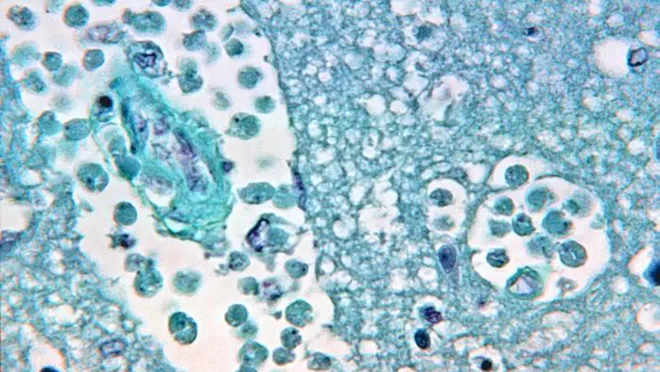Person dies of rare brain-eating amoeba traced to splash pad at Arkansas country club
An Arkansas resident has died after contracting an infection from a rare brain-eating amoeba at a splash pad.
According to the Arkansas Department of Health, which did not release the age, gender or date of death of the person, the resident died from a Naegleria fowleri infection, which destroys brain tissue, causing brain swelling and in certain cases, death.
After an investigation, which included sending samples from the pool and splash pad to the Centers for Disease Control and Prevention, the health department said the person was likely exposed at a splash pad at the Country Club of Little Rock.
The CDC reported one splash pad sample sent by the Arkansas Department of Health was confirmed to have "viable" Naegleria fowleri, according to a release, and the remaining samples are still pending.

The Country Club of Little Rock voluntarily closed the pool and splash pad, and the health department said there is no ongoing risk to the public.
Naegleria fowleri is rare – the last case reported in Arkansas was in 2013 – cannot infect people if swallowed and is not spread from person to person. According to the CDC, only around three people in the U.S. are infected by Naegleria fowleri each year, but those infections are usually fatal.
What is Naegleria fowleri?
Naegleria fowleri is an amoeba, or a single-celled living organism. It lives in soil and warm fresh water, including lakes, rivers and hot springs. It can also be found in pools and splash pads that are not properly maintained, according to the Arkansas Department of Health.
According to the CDC, it is commonly called the "brain-eating amoeba" because it can cause a brain infection when water containing the amoeba goes up the nose.
More:Doctors lost a man's 'likely cancerous' tumor before they could test it. Now he's suing.
Naegleria fowleri symptoms
You cannot become infected with Naegleria fowleri from drinking contaminated water, and it only comes from having contaminated water go up your nose.
According to the CDC, symptoms start between one to 12 days after swimming or having another nasal exposure to contaminated water, and people die one to 18 days after symptoms begin. According to the CDC, it can be difficult to detect because the disease progresses so rapidly that a diagnosis sometimes occurs after the person dies.
Symptoms include:
Stage 1
- Severe frontal headache
- Fever
- Nausea
- Vomiting
Stage 2
- Stiff neck
- Seizures
- Altered mental status
- Hallucinations
- Coma
Disclaimer: The copyright of this article belongs to the original author. Reposting this article is solely for the purpose of information dissemination and does not constitute any investment advice. If there is any infringement, please contact us immediately. We will make corrections or deletions as necessary. Thank you.







